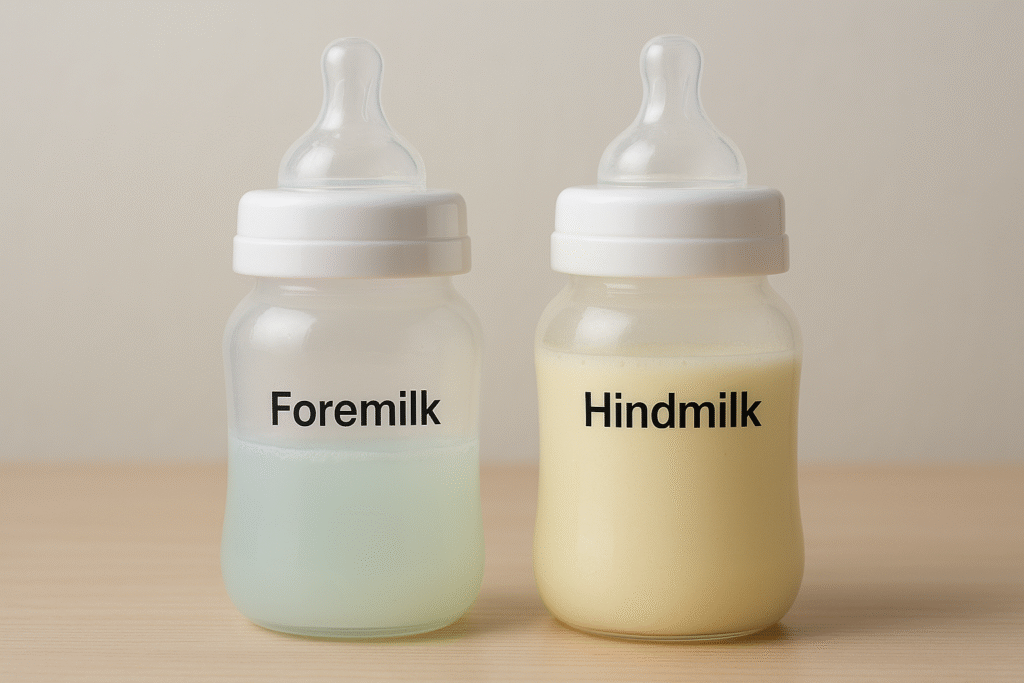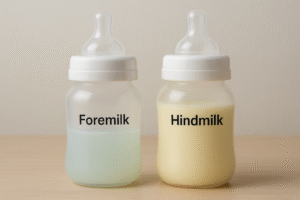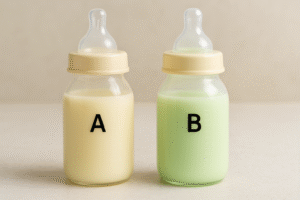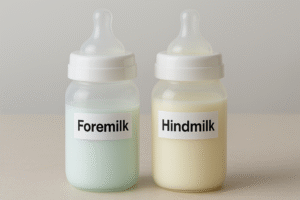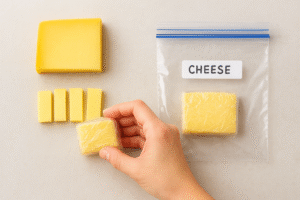If you’ve ever pumped or expressed milk and noticed it looks almost clear or watery, you’re not alone. Many new U.S. moms worry, wondering if clear breast milk means something is wrong — or if it’s safe for their baby. The good news: clear breast milk is completely normal.
In this guide, based on U.S. CDC breastfeeding safety recommendations, you’ll learn why breast milk sometimes appears clear, what it means nutritionally, and when it may signal something worth checking.
Why Is My Breast Milk Clear?
Breast milk constantly changes in color and consistency throughout the day and across feeding sessions. Clear milk is typically foremilk — the milk that comes first when you start feeding or pumping.
- Foremilk is thinner, higher in lactose, and keeps your baby hydrated.
- Hindmilk comes later and contains more fat, providing satiety and growth nutrients.
So if your milk looks clear or watery, it simply means you’re seeing more foremilk — not spoiled milk.
Common Reasons for Clear Breast Milk
- Short Pumping Sessions – You may be stopping before the fatty hindmilk appears.
- Hydration Level – Drinking lots of water can slightly dilute milk appearance.
- Time of Day – Morning milk tends to be thinner; evening milk creamier.
- Storage Separation – After refrigeration, fat rises to the top, leaving the bottom layer clear.
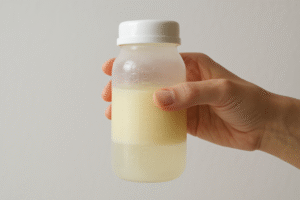
Is Clear Breast Milk Still Nutritious?
Yes, absolutely! Clear breast milk still provides essential nutrients, antibodies, and hydration benefits. According to the American Academy of Pediatrics, color variation is normal unless you notice a sour odor, curdling, or major texture change.
Step-by-Step: How to Ensure Balanced Milk
- Pump for 15–20 minutes to collect both foremilk and hindmilk.
- Alternate breasts every session.
- Massage gently during pumping to help fats flow evenly.
- Swirl, don’t shake, to mix layers naturally before feeding.

For related guidance, check How to Tell If Frozen Breast Milk Is Bad.
When to Be Concerned
While clear milk is almost always normal, consider checking further if:
- It stays watery even after full sessions.
- Your baby seems unusually fussy, underfed, or not gaining weight.
- It develops a soapy or sour smell, which can indicate lipase activity or spoilage.
⚠️ Immediate Action After Spoilage:
If you suspect your milk has gone bad (sour smell, clumps), do not shake or reheat it to “check.” Simply discard it. Taste-testing spoiled milk can expose your baby to bacteria.
🧪 Lipase Activity Note (Minor Enhancement)
If clear milk also has a strong soapy smell, it’s typically due to lipase enzyme activity — which breaks down fats. This milk is still safe and not spoiled. The change is natural and harmless, though some babies may dislike the taste.
Related Reading for U.S. Moms
For more visual reference, see Why Does My Breast Milk Look Watery? for comparison between thin and thick milk.
Also, explore Breast Milk Storage: Complete U.S. Mom’s Guide (2025 Edition) for safe handling and refrigeration times.
FAQ
Q1. Is clear breast milk bad for my baby?
No — it’s foremilk, full of hydration and sugar for energy.
Q2. Why does my breast milk look clear after thawing?
Fat separation makes thawed milk look translucent. Swirl before use.
Q3. Can I mix clear and creamy breast milk?
Yes, gently swirl to mix and provide balanced nutrition.
Q4. Should I pump longer if milk looks watery?
Yes. Pumping 2–3 extra minutes helps release richer hindmilk.
Conclusion
Clear breast milk is a normal, healthy part of your lactation journey. It shows your body is adapting perfectly to your baby’s needs. As long as your milk smells fresh and your baby’s growth is on track, you have nothing to worry about.
👉 For more U.S. lactation-safe resources, visit your local consultant or read our Complete Breast Milk Color Guide (2025).

